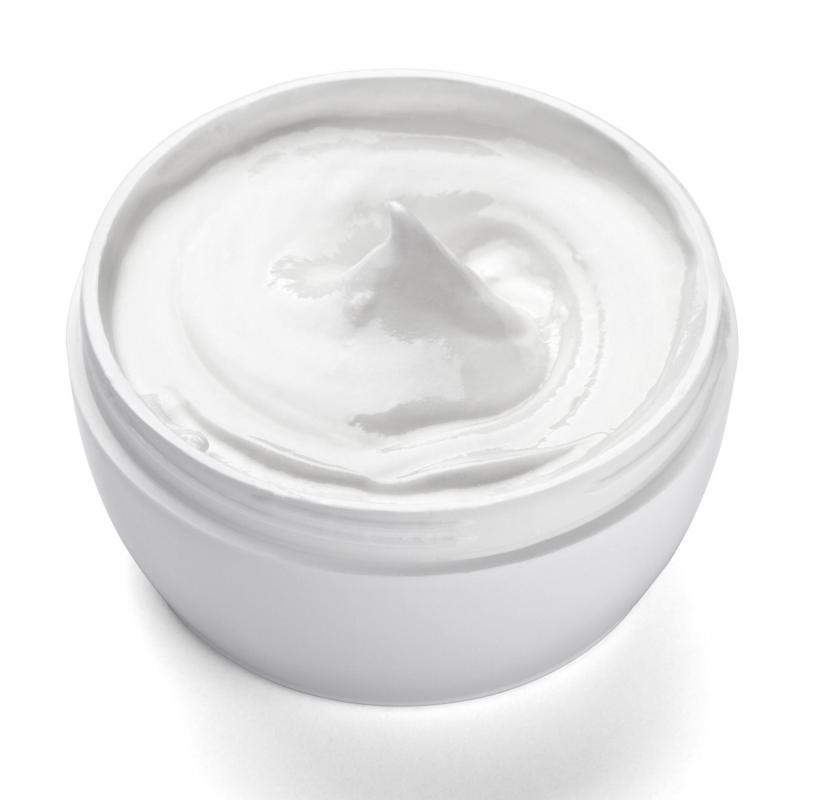At WiseGEEK, we're committed to delivering accurate, trustworthy information. Our expert-authored content is rigorously fact-checked and sourced from credible authorities. Discover how we uphold the highest standards in providing you with reliable knowledge.
How Do I Choose the Best Emollient Cream?
Emollient cream should apply smoothly over large areas of skin, while locking in moisture. A good emollient forms a water resistant barrier to help prevent skin from drying out, giving it time to replenish its own moisture beneath. Try emollient creams to see which moisturizes best, and if you suffer from eczema or psoriasis, consider which calms itchy and sore patches most effectively. Emollient creams containing petroleum, mineral oil and silicone are often considered the best, as well as emollients free from artificial colors, preservatives and perfumes, which can cause irritation to the skin. Choose a thin emollient cream if you suffer from mildly dry skin, and a thicker emollient if your skin condition is severe.
The best emollient cream forms a watertight layer over the skin, helping it to retain moisture. Dry and cracked skin can repair itself beneath the emollient cream barrier and replenish its own moisture levels. Very dry skin or conditions such as eczema can be relieved by allowing the skin to hydrate, easing itchiness and softening cracks in the skin. The skin should be softened by the emollient cream, allowing treatments, such as anti-inflammatory or antiseptic medication, to be able to penetrate the skin to get to work. If you have eczema or psoriasis, consult your doctor for advice on the best emollient creams because medicated emollient creams are usually available for these conditions upon prescription.

While spreading easily over the skin, emollient cream should be absorbed quickly. Expect it to be easily applied after washing your hands or having a shower in order to lock moisture into your skin. Greasiness can sometimes be experienced, but it should be minimal and disappear after a few minutes.
Choose an emollient cream that contains no artificial colors, preservatives or perfume, as these are known to irritate sensitive skin. No irritation or allergic reaction should be experienced from the use of the cream. The thickness of emollient you require depends upon the severity of your dry skin or skin condition, so if you suffer from dry, cracked and flaking skin, then a thick and oily emollient could be right for you. Choose a thinner emollient if you have milder symptoms such as dry patches of skin.

Common ingredients found in the best emollient creams are petroleum jelly which helps to seal in moisture, silicone which provides smooth application, and glycerin to help moisturize. A stinging sensation is sometimes experienced when emollient cream is first used, especially if the skin is cracked and open. These sensations should disappear over after a few uses, however if it does persist, then the cream is not right for you. Bottles and tubs of cream with a pump dispenser are the most hygienic to use; choose these unless you are using a spatula to remove the contents, because repeatedly placing your finger into the cream can spread infection.
AS FEATURED ON:
AS FEATURED ON:














Discuss this Article
Post your comments